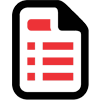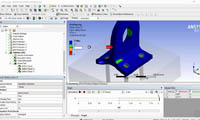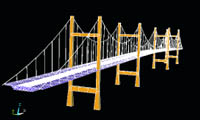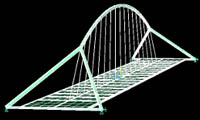ANSYS Civil
 Overview:
Overview:
ANSYS Civil helps engineers/designers to review the power of the range of variables in a virtual environment. Thereby helping engineers to design and do materials selection works quickly and efficiently.
 Why to learn?
Why to learn?
With ANSYS engineering simulation solution sets that are required for designing process, one can fulfill increasingly demanding safety and create environmentally conscious designs and government regulations.
ANSYS software is used by a wide variety of industries. It helps one to narrow down the scope of field investigations, save time and cost on projects, and can quickly move to the groundbreaking stage.
 Learning Objectives:
Learning Objectives:
CADD Center will help you to ace the associated features of ANSYS Civil:
- Blast, Explosion & Impact:
Useful for analyzing the impact of blast, explosion and impact in civil engineering projects like buildings, dams, bridges, stadiums and tunnels.
- Fire & Smoke Propagation:
Fire & smoke management systems designing for buildings, subways and other facilities like HVAC Equipment Designing; Structural Building Designing; and Ventilation & Comfort Modeling.
- Wind Engineering:
Using virtual modeling, understanding building aerodynamics is much efficient and accurate. Evaluating the structural load imposed by the wind.
 Learning Outcome:
Learning Outcome:
- Student will learn to test variables virtually to simulate the many possible scenarios and ultimately create the safest systems possible.
- Student will know how to do rock and soil mechanics analysis; material-specific maximum load assumptions; linear, nonlinear, static and dynamic analyses; sensitivity and parametric studies; and other related works.
- Student will test his/her designs in a virtual environment, and can analyze strength, safety, comfort and environmental considerations of buildings and other civil projects.
- Student will know how to virtually model various structures and test the impact of environmental and destructive forces as many times as needed to completely understand the effects of a disaster on a structure.
- Student will be able to apply mechanical, fluids and multiphysics tools to a wide range of HVAC equipment design, including: air conditioners, air cleaning equipment, chillers, boilers, diffusers, heat exchangers/coils, humidifiers/dehumidifiers, pumps/blowers, fans, heating equipment and compressors/exhausters, and refrigeration.
- Student will know how to import full 3-D CAD models into the ANSYS Workbench environment, and view and analyze 3-D product designs.
 Overview:
Overview:


 Why to learn?
Why to learn? Learning Objectives:
Learning Objectives: Learning Outcome:
Learning Outcome: